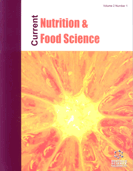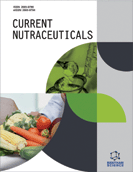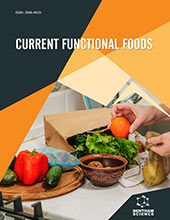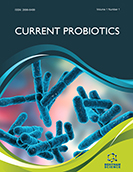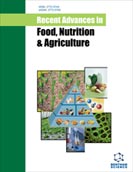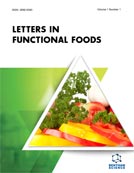Abstract
Carcinogenesis involves a growing accumulation of genetic and epigenetic aberrations, leading to the deregulation of cellular homeostasis, followed by neoplastic progression. Although nutritional lipids play a critical role the specific transcriptional mechanisms involved in this process are not completely understood. In this review, we examine the biological effects of dietary essential fatty acids (n-3 and n-6 EFAs) and vitamin A, and the common pathways related to cancer chemoprevention. Eicosanoids (EFAs derivates) and retinoids (vitamin A derivates) are major mediators that act on their corresponding RXR-heterodimerized receptors (PPAR and RAR) and modify the carcinogenetic signalling pathways. Several effects of these mediators, mainly at DNA level, depend on specific molecular properties of the receptor isoforms and their differential affinities for their ligands, whose availability can be intentionally managed through diet. Nevertheless, the previous grade of differentiation in normal development or in cancer cells is an important modulatory factor of the cellular responses, especially when differentiating agents are evaluated. The potential of dietary EFAs and retinoids in chemoprevention and chemotherapy, through their actions on the cellular proliferation and differentiation processes, with particular reference to human breast cancer is discussed herein.
Keywords: Cancer chemoprevention, eicosanoid, fatty acid, PPAR, retinoid, RXR
Current Nutrition & Food Science
Title: Interaction Between Retinoids and Eicosanoids: Their Relevance to Cancer Chemoprevention
Volume: 5 Issue: 2
Author(s): Patricia L. Quiroga, Aldo R. Eynard, Elio A. Soria and Mirta A. Valentich
Affiliation:
Keywords: Cancer chemoprevention, eicosanoid, fatty acid, PPAR, retinoid, RXR
Abstract: Carcinogenesis involves a growing accumulation of genetic and epigenetic aberrations, leading to the deregulation of cellular homeostasis, followed by neoplastic progression. Although nutritional lipids play a critical role the specific transcriptional mechanisms involved in this process are not completely understood. In this review, we examine the biological effects of dietary essential fatty acids (n-3 and n-6 EFAs) and vitamin A, and the common pathways related to cancer chemoprevention. Eicosanoids (EFAs derivates) and retinoids (vitamin A derivates) are major mediators that act on their corresponding RXR-heterodimerized receptors (PPAR and RAR) and modify the carcinogenetic signalling pathways. Several effects of these mediators, mainly at DNA level, depend on specific molecular properties of the receptor isoforms and their differential affinities for their ligands, whose availability can be intentionally managed through diet. Nevertheless, the previous grade of differentiation in normal development or in cancer cells is an important modulatory factor of the cellular responses, especially when differentiating agents are evaluated. The potential of dietary EFAs and retinoids in chemoprevention and chemotherapy, through their actions on the cellular proliferation and differentiation processes, with particular reference to human breast cancer is discussed herein.
Export Options
About this article
Cite this article as:
Quiroga L. Patricia, Eynard R. Aldo, Soria A. Elio and Valentich A. Mirta, Interaction Between Retinoids and Eicosanoids: Their Relevance to Cancer Chemoprevention, Current Nutrition & Food Science 2009; 5 (2) . https://dx.doi.org/10.2174/157340109788185553
| DOI https://dx.doi.org/10.2174/157340109788185553 |
Print ISSN 1573-4013 |
| Publisher Name Bentham Science Publisher |
Online ISSN 2212-3881 |
 4
4
- Author Guidelines
- Bentham Author Support Services (BASS)
- Graphical Abstracts
- Fabricating and Stating False Information
- Research Misconduct
- Post Publication Discussions and Corrections
- Publishing Ethics and Rectitude
- Increase Visibility of Your Article
- Archiving Policies
- Peer Review Workflow
- Order Your Article Before Print
- Promote Your Article
- Manuscript Transfer Facility
- Editorial Policies
- Allegations from Whistleblowers
- Announcements
Related Articles
-
Breakthrough Pain
Current Drug Therapy Multi-Target Profile of Oleocanthal, An Extra-Virgin Olive Oil Component
Current Bioactive Compounds Glycogen Synthase Kinase 3 as an Anticancer Drug Target: Novel Experimental Findings and Trends in the Design of Inhibitors
Current Pharmaceutical Design Molecular Pathways, Screening and Follow-up of Colorectal Carcinogenesis: An Overview
Current Cancer Therapy Reviews Discovery and ADMET: Where Are We Now
Current Topics in Medicinal Chemistry Inhibitor Binding Sites in the Protein Tyrosine Phosphatase SHP-2
Mini-Reviews in Medicinal Chemistry Vitamin D, Pit-1, GH, and PRL: Possible Roles in Breast Cancer Development
Current Medicinal Chemistry Concentrations of Cd, Cu, Pb and Zn in Blood Serum of Cancer Patients and Comparison with Healthy Person by Atomic Absorption Spectrometry
Current Analytical Chemistry Ghrelin and Motilin in the Gastrointestinal System
Current Pharmaceutical Design Tailored Angiogenesis Inhibition in Cancer Therapy: Respecting the Heart to Improve the Net Outcome
Current Signal Transduction Therapy Rapid Screening of Different Types of Antitumor Compound Groups from Traditional Chinese Medicine by Hollow Fiber Cell Fishing with High Performance Liquid Chromatography
Combinatorial Chemistry & High Throughput Screening Melatonin and Melatoninergic Drugs as Therapeutic Agents: Ramelteon and Agomelatine, the Two Most Promising Melatonin Receptor Agonists
Recent Patents on Endocrine, Metabolic & Immune Drug Discovery (Discontinued) Protein Glycation: An Old Villain is Shedding Secrets
Combinatorial Chemistry & High Throughput Screening Synthesis, Antiproliferative Activity and Molecular Docking of New Thiazole/Benzothiazole Fused Pyranopyrimidine Derivatives
Letters in Organic Chemistry Development and Engineering of Lymphatic Endothelial Cells: Clinical Implications
Current Pharmaceutical Design Molecule of the Month
Current Topics in Medicinal Chemistry Highlights in Peptide Nanoparticle Carriers Intended to Oral Diseases
Current Topics in Medicinal Chemistry Gliomas: Current Issues in Diagnosis and Treatment
Current Medical Imaging Editorial (Hot Topic: Ductal Carcinoma in situ (DCIS) of the Breast, Biomarkers, Diagnosis, and Treatment of the Disease)
Current Cancer Therapy Reviews Molecular Pharmacology and Pharmacogenomics of Artemisinin and its Derivatives in Cancer Cells
Current Drug Targets


